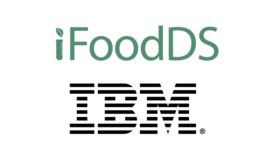Home » Keywords: » traceability
Items Tagged with 'traceability'
ARTICLES
BIZTRACKS
Automated Traceability Solution for Food Industry Now More Affordable
October 12, 2023
BIZTRACKS
CAST, IFT Publish Traceability Issue Paper to Help Industry Improve Food Safety
September 28, 2023
EVENTS
Webinar
7/20/23 to 7/20/24
Contact: Vania Halabou
Acquiring the Taste for AI—Niche Applications for Food and Beverage
Webinar
9/6/23 to 9/6/24
Contact: Vania Halabou
FDA's Food Traceability Rule: Going Beyond Regulatory Compliance with Ambient IoT
Never miss the latest news and trends driving the food safety industry
eNewsletter | Website | eMagazine
JOIN TODAY!Copyright ©2024. All Rights Reserved BNP Media.
Design, CMS, Hosting & Web Development :: ePublishing









